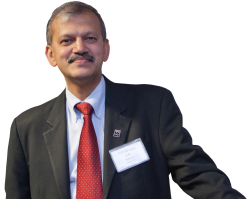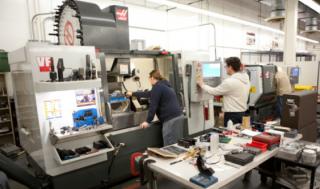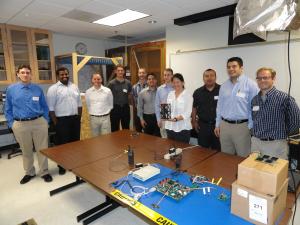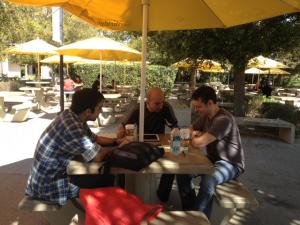 It’s a pervasive dilemma of modern urban society: how to determine the number of empty spaces available in parking lots for popular destinations, like malls, movie theaters and, well, CSUN.
It’s a pervasive dilemma of modern urban society: how to determine the number of empty spaces available in parking lots for popular destinations, like malls, movie theaters and, well, CSUN.
Current solutions include sensors or cameras that track how many spaces are occupied, coupled with digital signs at parking lot entrances that indicate the number of free spaces. So far, these installations offer varying degrees of accuracy, and with so many sensors to install and hook up, large-scale systems are expensive.
Last year, a couple of CECS students, Norvan Gorgi and Mazyar Aram, came up with a different, more cost-effective idea: rather than tracking the status of each parking space, why not track the number of cars entering and exiting the lots to tally the total at any given time, which would be far cheaper than existing solutions? The need was so great and their concept so promising that they received CSUN funding to implement their idea in parking structure B5 as a proof-of-concept study. After the university’s Physical Plant Management drilled four holes in the pavement at the lot’s entrances and exits to accommodate sensors, the team installed the sensors, which communicate to a central device to track the comings and goings of the cars. Gorgi and Aram developed a basic interface and spent last spring and summer demonstrating that their system works.
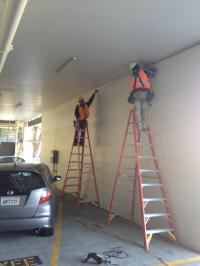 Their success has led to renewed funding for the 2013-14 academic year, which is enabling them to implement the second phase of the project—expanding to two additional parking structures and creating a Web-based service and mobile applications for Android and iOS that will interact with the system and provide users with the occupancy of the lot at any given time.
Their success has led to renewed funding for the 2013-14 academic year, which is enabling them to implement the second phase of the project—expanding to two additional parking structures and creating a Web-based service and mobile applications for Android and iOS that will interact with the system and provide users with the occupancy of the lot at any given time.
“The attractive piece of this project is that we might be able to give the same information much cheaper than most of the competition and also provide the availability of parking online as opposed to at the entrance of the lot,” says Adam Kaplan, assistant professor of computer science, who is serving as the project’s technology faculty advisor. “We may also be able to trace the history of the demand for parking, using a graph, for instance, to show the trends on a day-to-day basis, which would be valuable to campus police, who have to direct traffic for special events, and for students and visitors. I can’t see anyone losing.”
As it evolves, the app may be incorporated into the CSUN mobile app that debuted this year. And looking ahead, Kaplan says, it could morph into a real business. For now, though, the team is focused on developing the system into an application with utility for anyone who drives to CSUN.
A message from the Dean
February 6, 2014Industry partnerships – HAAS
February 6, 2014Industry Partnerships – Jet Propulsion Laboratory
February 6, 2014
Leave a reply Cancel reply
-
Spectra Spring 2010
June 16, 2010 -
Research Fellow – Ruting Jia
April 6, 2017 -
A Laboratory for the Future
June 16, 2010

